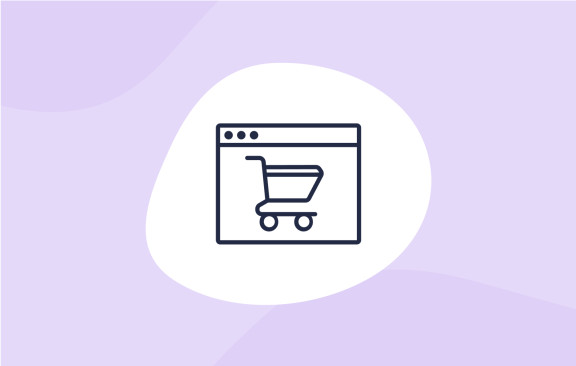74% of B2B buyers report researching at least half of their purchases online. This is because most B2B buyers are millennials who already prefer shopping online. They have high standards set by the prominent leaders of consumer eCommerce.
But how do you get started in B2B eCommerce? How do you provide the convenience and smoothness of online shopping to the complex B2B sales cycles?
In this guide, we’ll go over how B2B eCommerce works and how to set up your platform. Let’s dive in.
What is B2B eCommerce?
Let’s get on the same page with the definitions.
Business-to-business (B2B) eCommerce is an online business model that involves selling products and services between two businesses. B2B transactions usually boast big order values, high-profit margins, and complex processes.
As opposed to the B2C, the B2B sales cycles are usually long and involve more than one person. Namely, it may take from a couple of weeks to a couple of years for a transaction to take place, involving on average 7 people to sign off on the deal.
How does eCommerce work in B2B? Modern technologies have allowed transferring the long and tedious B2B sales processes online and make them easier for all parties involved. With the help of B2B eCommerce portals, buyers search for products and services, compare them, make online orders, manage and track their orders, as well as collaborate with colleagues involved in the deal.
This digital transformation became amplified by the pandemic, forcing even more B2B buyers and sellers to go digital. What started as a crisis response has now turned into the new normal. eCommerce has become essential for businesses to be able to compete in the global marketplace. Industry-watchers predict that the B2B eCommerce market will reach $20.9 trillion by 2027.
How to start a B2B eCommerce store

Step 1: Choose your market
When starting a B2B eCommerce business you need to first answer this question:
Are you going for a vertical or a horizontal online store?
Vertical
A vertical eCommerce platform means you will specialize in a particular product category or even in one product, like, for instance, GlobalWineTrade that specializes in wine trading.
If you want to start small and grow with time then it is best to choose a vertical market strategy. Choose a niche that you already know well and create a specialty B2B eCommerce store.
The narrow specialty will allow you to better allocate your scarce resources and be more precise with your marketing activities. This is because you won’t have to spread your marketing budget thin by chasing a lot of different types of buyers at the same time.
The downside of this approach is that a narrow niche has less growth potential than the entire industry or even several industries. So once you hit the growth ceiling, you’ll have to pivot to a horizontal strategy.
Horizontal
A horizontal approach implies that you will be selling a wide array of products to a wide audience. Alibaba is a good example of a horizontal B2B platform, you can find nearly everything under the sun there.
If you have the resources to target a wider market and want to grow at giant leaps, then a horizontal strategy is the way to go. However, be prepared to slice and dice your audience into small market segments, to be able to provide the best offering for every buyer type.
As you’ve already guessed, to be effective, the horizontal strategy requires big investments. You’ll have to manage a lot of product categories and come up with ways to reach and please many buyer types.
So what market should you choose? Ask yourself the following questions:
- Where do you have expertise and connections? It is best if you already have the necessary industry knowledge and network of potential suppliers and/or buyers. This will save you tons of time and money.
- Is the market big enough? It can be great to start with a narrow specialty, but be sure that it is not too narrow. Some niches can be too small to generate enough revenue for the sellers.
- What are your chances against the competition? Whatever market you choose it is essential to conduct competitor analysis. Make sure that your offering will be competitive enough for the buyers to choose you over the existing players. You can even do a SWOT Analysis where you examine your business's strengths, weaknesses, opportunities, and threats, according to your competition in the market.
- Is the market growing? You wouldn’t want to enter a market that is already stagnating or declining. Unless you are going to introduce a major disruption to this market, there won’t be many opportunities for you.
Step 2: Decide how you are going to make money – choose your business model
A business model is an approach that you’re taking to make money. Picking the right business model is a foundation for other aspects of your business.
Below are five B2B business models with various levels of involvement in the manufacturing, warehousing, and shipping of the products.
- Manufacturing: utilizing raw materials to create a product to sell. Manufacturing and selling goods involve large investments and high risks. You will be responsible for everything: production, storage, and distribution. In return, this business model can potentially bring you the highest profit margins.
- Wholesale: purchasing and selling goods in bulk. In this case, although you don’t produce goods, you still have to procure large quantities of goods, store and ship them to clients. You will avoid the manufacturing hustle, but you’ll have to invest in warehousing and shipping.
- Dropshipping for B2B: selling the product and transferring orders to a third-party supplier (called a dropshipper), who ships it to the customer. It frees you from bulk purchases, warehousing, and even shipping to clients. You can start a dropshipping business with low investment and low risks, however, your margins will also be low.
- Private labeling: manufacturing products by a third party and selling under another company's brand name. In a nutshell, private labeling involves purchasing a product, customizing it, and selling under your label. This business model will require additional investments into branding and therefore can lead to higher profits. Selling under your brand can allow you to have a higher profit margin compared to reselling other brands.
As you can see the ‘Risk-Return Trade Off’ principle applies here - the higher the investment and risks, the higher the potential returns.
| Risks | Investments | Profit Margins | |
|---|---|---|---|
| Manufacturing | high | high | high |
| Wholesale | high | medium | medium |
| Dropshipping | low | low | low |
| Private label | high | medium | high/medium |
Step 3: Select key features of your B2B eCommerce website

The features that you choose for your B2B eCommerce website will depend on your target audience, as well as your unique selling points.
However, in general, your website should allow buyers to:
- discover you in whatever channels they are using to find vendors (e.g. Google, social media, industry portals)
- easily find products
- access all needed product information (images, descriptions, availability)
- see pricing options and/or request a special price
- track and manage their orders
- get the necessary customer support.
Let’s go over the key features of a B2B eCommerce website.
-
Company account
Buyers should have their own accounts, as well as the ability to add colleagues to your platform and create company accounts.
-
Product catalog and listing details
Comprehensive product descriptions and professional photos are even more important for B2B buyers since order costs are high.
-
Search
Robust product search is paramount to a great shopping experience. Don’t let your prospective buyers flip page after page looking for what they need, it’s a major conversion killer. Instead, offer a fast search engine with all the necessary filters and search options.
-
Personalization and recommendations
73% of B2B buyers identify personalization as a key feature when searching for online suppliers. Although B2B customers are more data-driven than B2C customers, they expect a deep understanding of their needs. Providing relevant experiences at the right moment is the key to fostering customer loyalty and increasing repeat purchases.
-
Product comparison system
Product comparison is part of the job of a B2B buyer, so why not help them do it with ease? You can create comparisons among your offerings, and even show how your products compare to those of your competitors.
-
Pricing options
B2B pricing will depend on order quantity, branding, shipment, and discounts. Common pricing options include Request for Quotation (RFQ), Customer-Driven Pricing, and Dynamic Pricing.
-
Payment gateways
Inconvenient or untrustworthy payment can be a major conversion killer. So it is best to have several payment options on your website, chosen based on your deep knowledge of the target buyers.
-
Rating and reviews
Your potential customers will turn to reviews to learn all they can about your service or product. Rating and reviews are the most effective ways to boost your brand’s conversion and credibility, so be sure to use them. You can allow customers to review your products on your website, as well as show ratings and reviews from other industry-recognized review platforms.
-
Shipping and delivery
Unless you choose dropshipping that takes care of order delivery, you’ll have to find a way to deliver products by yourself. You might consider outsourcing shipping and delivery to third-party logistics companies (aka 3PL services).
-
Integrations
Most likely you will use other types of software to run your business like CRM, ERP, or some other solutions, integrating them with your website can become a game-changer. It will save you tons of time, allowing you to maintain up-to-date product information, connect online payment services, and automatically synchronize all data.
-
Admin back-office
And last but not least, you will need a robust admin panel to run your B2B eCommerce platform. Firstly, you’ll need a dashboard to track KPIs, then you’ll need to manage users, orders, suppliers, finances, content, and reporting.

Of course, the list of features for each B2B eCommerce website varies depending on what is essential for the owner and the customers. Now let’s see what are the ways to bring them to life.
Step 4: Decide how you are going to develop your B2B eCommerce website
When creating your B2B eCommerce website, you have several options. You can either choose one of the off-the-shelf solutions or build your website from scratch. This choice will depend on your specific needs, long-term plans, and your budget. Let's look at each of these in turn.
Off-the-shelf eCommerce platforms
An off-the-shelf eCommerce platform is a type of software that you can use to create an online store. These solutions are created for the mass market. Each platform has a predefined functionality and interfaces with varying degrees of customization. There are three types of off-the-shelf solutions: a website builder, CMS platform, or enterprise-level CMS solution.
Website builders make it easy to create a website without extensive development knowledge. The most popular website builders for eCommerce include:
CMS platforms offer basic functionality and a lot of plugins that extend the functionality. CMS stands for a Content Management System which facilitates easy creation and update of content. The most popular CMS platforms for eCommerce are:
Enterprise-level solutions are designed for medium and large-sized businesses. They offer advanced functionality and features. Some of the most popular off-the-shelf solutions include:
eCommerce development from scratch
A custom B2B eCommerce website is created from scratch using one of the programming languages and frameworks such as custom Magento development (or e.g. PHP and Laravel or Ruby on Rails). With custom development, you can build exactly what you want and make any necessary changes in the future.
Off-the-shelf eCommerce platforms vs custom development: pros and cons
Each type of solution has its place and purpose. When choosing the best way to develop a B2B eCommerce platform consider the following criteria: cost, time to launch, flexibility, and security.
Off-the-shelf solutions are less expensive and faster to launch as opposed to developing your website from scratch. However, with canned solutions, it will be hard to get exactly what you need, especially if you require unique functionality.
Moreover, a custom-built website is almost always more secure than the one built with off-the-shelf software. It is easier and more lucrative to hack websites powered by mass-market CMS solutions. Anyone can get access to the code of proprietary or open-source solutions and study their vulnerabilities. The discovered backdoors can be used to hack many websites in one go. This is opposed to the custom websites, where only the owner and the team have access to the code, while any vulnerabilities can be used only against one particular website. This makes custom websites less attractive to hackers.
Generally, if you don't need any specific functionality, you can get by with a ready-made solution. But if your company needs software with high customization options, and you want to craft personalized customer experiences, custom development is most likely your choice.

How to apply this to your business
B2B eCommerce is growing at a rapid pace so why not hop on the bandwagon?!
If you are ready to jump in, you’ll have to make a lot of important decisions — select your niche, choose a business model and key features of your website, as well as find the best way to develop it.
As with anything in life the riskier the choice the more rewarding it can be. The degree of risks to take should depend on how much experience you already have in your market and how many resources you can allocate to this business. However, you can always start small and go at a comfortable pace.











